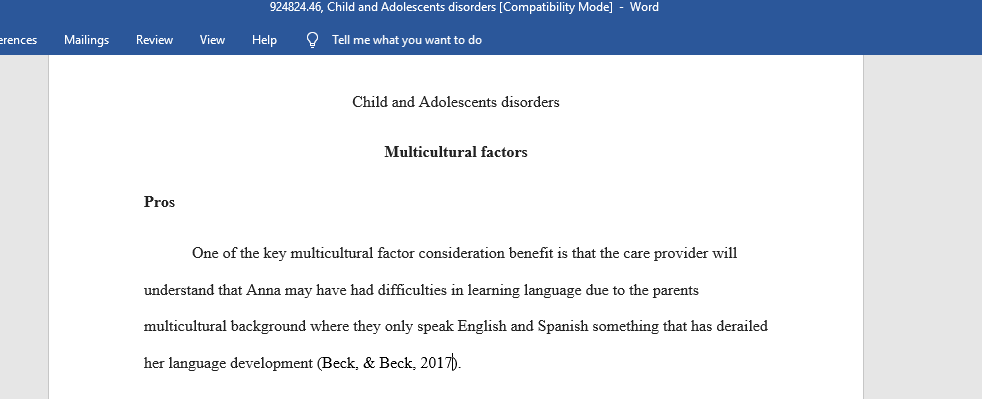Pros and Cons of Diagnosing Children
Child and Adolescents disorders. Pros and Cons of Diagnosing Children
One of the main controversies in the field of psychology relates to how we define “normal” and “abnormal” behavior. There is a general agreement with the official definitions of abnormal behavior that rises to the level of needing a diagnosis and psychological and psychiatric treatment. These official definitions are contained in the Diagnostic and Statistical Manual of Mental Disorders (DSM). There have been many revisions of this manual over the years. Currently, there is the Fifth Edition, of the Diagnostic and Statistical Manual of Mental Disorders, Fifth Edition (DSM-5)(APA, 2013).
Children and adolescents who display certain behaviors that cause them to have significant difficulty in their everyday functioning are likely to be diagnosed with one of the disorders. Some of these diagnoses are temporary, whereas others are lifelong.
Case Study: Anna Flores
Anna Flores is a four-year-old Mexican American girl, who lives with her mother and father. Anna’s parents immigrated to the United States years before her birth. Her mother speaks only Spanish to her, while her father speaks only English. Anna ‘s parents are migrant workers who must move regularly. Anna and her parents have moved over ten times since her birth. They hope to provide Anna with more stability now that she is approaching school age; therefore, they are seeking other forms of employment. Anna recently completed kindergarten orientation. The school psychologist has recommended that her parents have her evaluated further as her speech development is significantly delayed. She speaks very little; her vocabulary was screened at the kindergarten orientation and found to be at least two years behind typical speech development. During the kindergarten screening, Anna was hyperactive, unable to sit still, distracted, and unable to complete the tasks. She was unable to complete them, partially due to their difficulty level but also due to her inability to focus properly.
After a thorough evaluation at the local mental health center, Anna was diagnosed with attention-deficit/
Drawing from the week’s reading and ancillary research, address the following:
Discuss the pros and cons of diagnosing Anna with a mental health disorder. Identify at least three benefits and three costs that Anna and her family may experience as a result of her diagnosis.
When deciding what pros and cons to identify, consider the benefits and costs related to at least two of the following categories:
Stigma
Prescribing psychiatric medication to children
Selecting a psychotherapy approach
Multicultural factors
Labeling or mislabeling children
Providing early intervention
Answer preview for Pros and Cons of Diagnosing Children
Access the full answer containing 321 words by clicking the below purchase button

